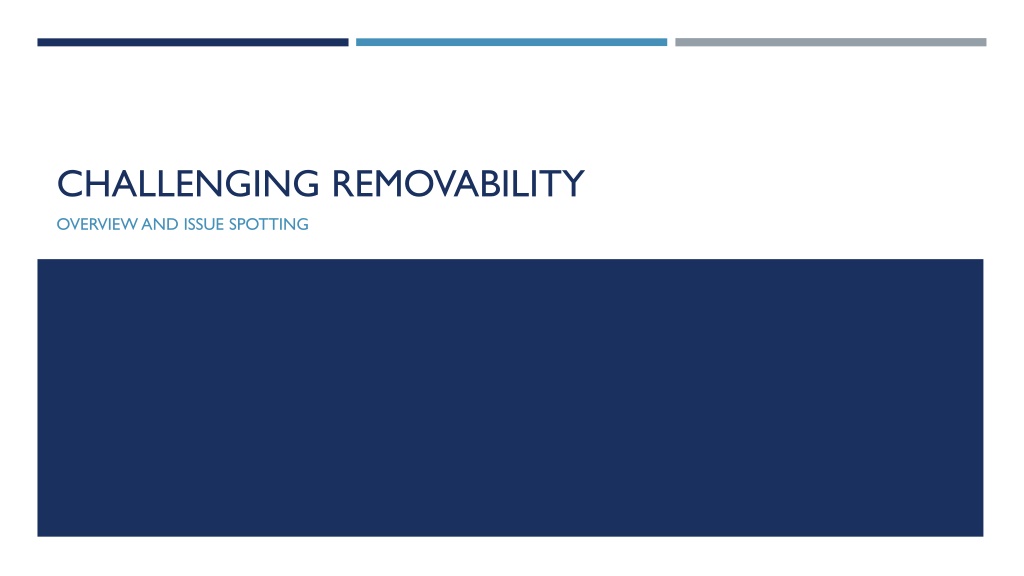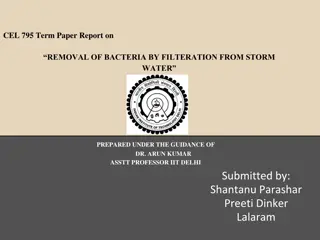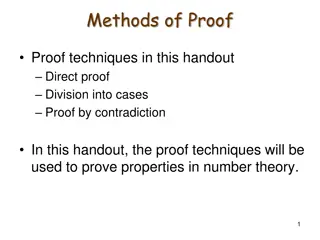Understanding Burden of Proof in Removal Proceedings
This material provides an overview of challenging removability issues, burden of proof on removal charges, and key aspects related to Notice to Appear (NTA) and factual allegations in immigration cases. It discusses who holds the burden of proof in different scenarios, such as arriving aliens and those lawfully admitted. Understanding these concepts is crucial for effectively responding to removal proceedings and identifying essential points to build a solid defense for clients.
Download Presentation

Please find below an Image/Link to download the presentation.
The content on the website is provided AS IS for your information and personal use only. It may not be sold, licensed, or shared on other websites without obtaining consent from the author. Download presentation by click this link. If you encounter any issues during the download, it is possible that the publisher has removed the file from their server.
E N D
Presentation Transcript
CHALLENGING REMOVABILITY OVERVIEW AND ISSUE SPOTTING
BURDEN OF PROOF ON REMOVAL CHARGE You have your first intake and receive the NTA in your client s case. In your interview you learn that your client crossed the border in 2013 and was never detected by ICE. Who has the burden of proof? 1. Your client; or 2. The government?
Arriving Aliens The __________ must prove clearly and beyond a doubt___________. Aliens who are not admitted The ________ must prove alienage by clear, unequivocal and convincing evidence. Once established, the ___________ must prove____________.
Those lawfully admitted The _______________ must prove__________ by clear and convincing standard.
NOTICE TO APPEAR HOW TO RESPOND? Notice to Appear (NTA) In order to initiate a case against an individual must file an NTA the charging document needed to initiate removal proceeding requirements found at INA 239 The NTA will include factual allegations and the legal ground(s) under which DHS is attempting to remove the person = grounds of removability In order to respond to the charging document you must understand the burden, your client s history and what evidence the government has in support of the allegations Slow down! How you respond can make or break the case
FACTUAL ALLEGATIONS Most Common Factual Allegations: Alienage Possible immigration status and/or history of entries into the United States Criminal allegations Fraud allegations
ALIENAGE: ISSUE SPOTTING Factual allegations often have to do with immigration status, history of entries to U.S., place of birth review carefully! Be aware of these rare but important issues: Is my client a derivative citizen? Look for: Client in U.S. before 18thbirthday and one or more parent is U.S. Citizen [ILRC chart] Note: Nwozuzu v. Holder, 726 F.3d 323 (2d Cir. 2013) even if child was not LPR so long as can demonstrate reside permanently may derive BUT requires some objective official manifestation of the child's permanent residence [I-485 application? Something else?] Did my client acquire citizenship at birth? Very rare and complex but can arise, look out for parents (even grandparents) who may have been USCs You want to start collecting documents as soon as you suspect may be a citizen and notify ICE, in early days of NYIFUP we had several releases if successful refer to civil attorney can sue for damages
EVIDENTIARY CHALLENGES: ALIENAGE ALIENAGE What documents do they have to show place of birth? Authentication challenge to foreign documents Possible suppression argument more below to exclude these documents I-213 presumed inherently trustworthy to show alienage BUT look closely for challenges Inaccuracies, e.g. Eritrean asylum case Based on coercion? Based on interview? Translation? Lack of detail
POSSIBILITY TO SUPPRESS EVIDENCE? Motion to suppress evidence: move to exclude evidence of alienage illegally obtained by government INS v. Lopez-Mendoza, 468 U.S. 1032 (1984) - Exclusionary rule applies narrowly in immigration context; only 4th Amendment violations where: Egregious and/or Widespread?* Always ask client about the circumstances of the arrest and how the government obtained the documents PRACTICE TIP: deny alienage! Neither you nor client nor any other witness can admit alienage at any point. Be mindful in all applications, e.g. FOIA request, or any other communication with government.
CRIMINAL ALLEGATIONS: ISSUE SPOTTING Review closely: correct information? (details matter) Correct court information? Jurisdiction? Allegations of conviction must be supported by documentation
EVIDENTIARY CHALLENGES: CRIMINAL DOCUMENTS EVIDENCE: Certificates of disposition Criminal complaints/indictments RAP Sheets CHALLENGES 8 C.F.R. 1003.41(a) formal conviction documents To be admissible either (1) certified by court or (2) authenticated under 8 C.F.R. 287.6(a) 8 C.F.R. 1003.41(c) electronic copy of conviction record should comply with authentication requirements, but see Matter of J.R. Velasquez Do not assume disposition records or RAP sheets are correct Review with client and then also order files! Be aware of errors from underlying criminal case, e.g. YO conviction I-213 may also be relied upon for criminal issues challenge them same as above, unreliability and trustworthy challenges E.g. gang allegations
CHALLENGING REMOVAL GROUNDS See IDP Removal Defense Checklist in Criminal Charge Cases [reviews various challenges] Criminal charges where there is a conviction more on this later - categorical approach! But be aware of admitted commission or reason to believe grounds where no conviction Fraud grounds Immigration violations
CHALLENGING PROCEDURAL ISSUES - Client must be properly served with an NTA - Service issues - Mental incompetency special rules 8 CFR 103.8(c)(2)(i)(ii) - Signed by agent/officer with proper authority - 8 C.F.R. 239.1 - Note: if you win on a motion to suppress evidence of alienage can also be a way to terminate and in essence challenge the NTA
REVIEW QUESTIONS Who has burden of proof in the case of a lawful permanent resident facing removal? What is standard? What are three key questions you should ask client to determine if derivative citizenship possibility? What are several ways to challenge the reliability of the information contained in the I-213?























